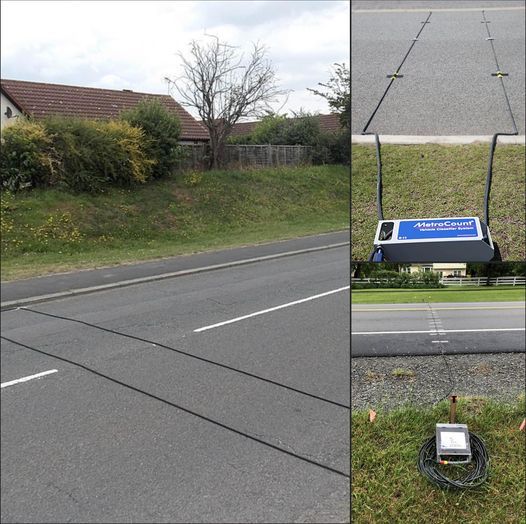If you’ve ever noticed black cables stretched across the road during your daily commute, you might have wondered about their purpose. These unassuming tubes, often overlooked by drivers, are an integral part of our transportation infrastructure. Though they may seem like inconspicuous additions to the road, these black cables play a crucial role in collecting data that shapes how our roads are managed and developed. Let’s unravel the mystery behind these cables and explore their significance in traffic management.

These cables, known as portable traffic counters, are strategically placed by transportation authorities to gather essential data about road usage and traffic patterns. Local agencies primarily deploy them to monitor vehicle flow, helping to create a detailed picture of how roads are being utilized. With over 12,000 traffic counters scattered across various states, these tools provide critical insights that guide decision-making in road planning, safety improvements, and resource allocation.
The technology behind these black cables is both simple and highly effective. When a vehicle passes over the rubber tube, the contact creates a burst of air pressure. This pressure activates a pneumatic mechanism that sends an electrical signal to a counter device. Each signal represents a vehicle crossing the tube, enabling the system to count vehicles over a specific period. By analyzing the intervals between these bursts, transportation agencies can determine the volume of traffic and identify peak congestion times.
When the tubes are set up in pairs, their capabilities expand significantly. Paired tubes can capture additional data, such as vehicle speed, direction, and classification based on the number of axles. This detailed information is invaluable for traffic engineers and planners, as it informs decisions about speed limits, road signage, and even future road construction projects. These insights allow municipalities to allocate resources effectively, ensuring that roads remain safe and efficient for all users.
Beyond their primary function of counting vehicles, these black cables serve a much broader purpose in traffic management. They are versatile tools that provide multi-dimensional data crucial for enhancing road infrastructure. For example, the U.S. Department of Transportation highlights how these tubes can be used for both temporary and permanent installations. Temporary setups, which may only be in place for a day or two, provide a snapshot of traffic conditions, while permanent installations offer continuous monitoring, allowing agencies to track long-term trends and changes in traffic patterns.
The placement of these cables is carefully considered to ensure accurate data collection. Transportation agencies often position them on straight stretches of road with minimal interference to capture the clearest picture of traffic flow. In single-tube setups, the focus is on counting vehicles and measuring the time gaps between them. Paired setups, on the other hand, delve deeper into traffic dynamics, recording axle counts, speeds, and directions to provide a comprehensive analysis of road usage.
These cables also play a vital role in addressing local traffic concerns. For instance, if residents in a neighborhood report issues such as speeding or shortcutting through residential streets, transportation authorities can deploy these tubes to investigate. The data collected helps validate complaints and informs the development of targeted solutions, such as traffic calming measures or adjusted speed limits. Additionally, the information gathered contributes to the formulation of transportation budgets, ensuring that funds are allocated where they are needed most.
While they may seem like simple tools, these black cables are at the heart of modern traffic management. They act as silent observers, capturing data that reflects the “heartbeat” of our road networks. This data is then used to guide critical decisions that shape the future of our transportation systems, from planning new roads to implementing safety improvements. Without these cables, understanding and managing traffic patterns would be far more challenging.
The next time you drive over these cables, take a moment to appreciate the sophisticated data collection happening beneath your tires. These tubes are more than just black lines stretched across the road—they are the unsung heroes of our transportation infrastructure. By providing vital information about road usage, they help create safer, more efficient roads for everyone. As you pass over them, remember that these cables are working tirelessly to keep our road networks running smoothly, making them an essential part of our evolving transportation landscape.





